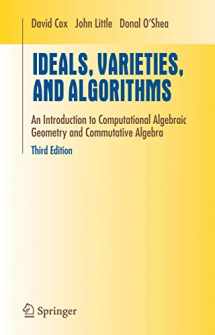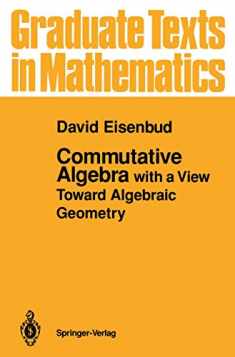
Ideals, Varieties, and Algorithms: An Introduction to Computational Algebraic Geometry and Commutative Algebra (Undergraduate Texts in Mathematics)
ISBN-13:
9780387356501
ISBN-10:
0387356509
Edition:
3rd
Author:
David A. Cox, Donal OShea, John B. Little
Publication date:
2007
Publisher:
Springer
Format:
Hardcover
576 pages
Category:
Mathematical & Statistical
,
Software
FREE US shipping
Book details
ISBN-13:
9780387356501
ISBN-10:
0387356509
Edition:
3rd
Author:
David A. Cox, Donal OShea, John B. Little
Publication date:
2007
Publisher:
Springer
Format:
Hardcover
576 pages
Category:
Mathematical & Statistical
,
Software
Summary
Ideals, Varieties, and Algorithms: An Introduction to Computational Algebraic Geometry and Commutative Algebra (Undergraduate Texts in Mathematics) (ISBN-13: 9780387356501 and ISBN-10: 0387356509), written by authors
David A. Cox, Donal OShea, John B. Little, was published by Springer in 2007.
With an overall rating of 4.0 stars, it's a notable title among other
Mathematical & Statistical
(Software) books. You can easily purchase or rent Ideals, Varieties, and Algorithms: An Introduction to Computational Algebraic Geometry and Commutative Algebra (Undergraduate Texts in Mathematics) (Hardcover) from BooksRun,
along with many other new and used
Mathematical & Statistical
books
and textbooks.
And, if you're looking to sell your copy, our current buyback offer is $3.16.
Description
This book details the heart and soul of modern commutative and algebraic geometry. It covers such topics as the Hilbert Basis Theorem, the Nullstellensatz, invariant theory, projective geometry, and dimension theory. In addition to enhancing the text of the second edition, with over 200 pages reflecting changes to enhance clarity and correctness, this third edition of Ideals, Varieties and Algorithms includes: a significantly updated section on Maple; updated information on AXIOM, CoCoA, Macaulay 2, Magma, Mathematica and SINGULAR; and presents a shorter proof of the Extension Theorem.


We would LOVE it if you could help us and other readers by reviewing the book
Book review

Congratulations! We have received your book review.
{user}
{createdAt}
by {truncated_author}




